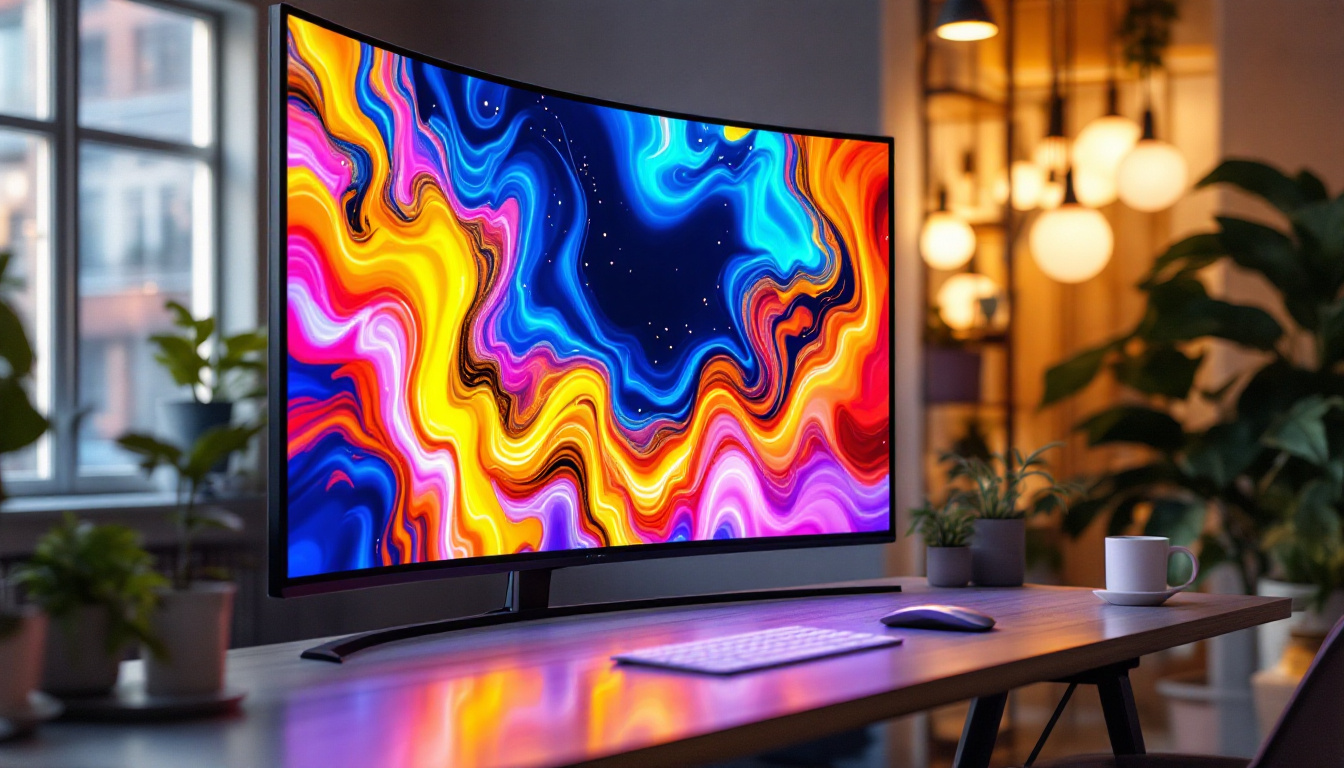In the realm of modern technology, displays play a pivotal role in how we interact with devices. Among the most prevalent types of displays are LCD (Liquid Crystal Display) and LED (Light Emitting Diode) technologies. Understanding these technologies, especially in relation to touch interfaces, is essential for anyone looking to navigate the digital landscape effectively. This article delves into the intricacies of LCD and LED displays, their functionalities, and how touch technology integrates into these systems.
Understanding LCD Technology
Liquid Crystal Displays, or LCDs, have become a staple in the world of screens, from televisions to smartphones. They operate by manipulating light through liquid crystals, which are sandwiched between two layers of glass or plastic. This technology is notable for its ability to produce sharp images with vibrant colors, making it a popular choice for various applications. The versatility of LCDs has allowed them to be integrated into a wide array of devices, from small handheld gadgets to large-scale televisions, making them ubiquitous in modern life.
How LCDs Work
The core principle behind LCD technology involves the use of liquid crystals that respond to electric currents. When a voltage is applied, these crystals align in such a way that they either block or allow light to pass through. The backlight, typically an LED, shines through these layers, illuminating the display. This combination of liquid crystals and backlighting results in the images and colors we see on the screen. Additionally, advancements in technology have led to the development of various enhancements, such as edge-lit and full-array backlighting, which improve brightness and contrast ratios, further enhancing the viewing experience.
LCDs are divided into two main categories: Twisted Nematic (TN) and In-Plane Switching (IPS). TN panels are known for their fast response times, making them ideal for gaming, while IPS panels offer wider viewing angles and better color reproduction, which is preferred for professional graphic work. Furthermore, there are also Vertical Alignment (VA) panels that strike a balance between the two, providing deeper blacks and better contrast, which can be particularly appealing for movie watching and general media consumption.
Advantages and Disadvantages of LCDs
One of the significant advantages of LCDs is their energy efficiency compared to older technologies like CRT (Cathode Ray Tube) displays. They are also thinner and lighter, making them suitable for portable devices. However, LCDs do have some drawbacks. They can suffer from limited viewing angles, particularly with TN panels, and may not achieve the same level of black depth as OLED displays. Additionally, the response time can vary significantly between different types of LCDs, which can affect the overall performance in fast-paced scenarios, such as gaming or action movies, where motion blur may become noticeable.
Another consideration when evaluating LCD technology is its longevity and durability. LCD screens are generally more resistant to burn-in issues compared to OLEDs, which can suffer from image retention over time. This makes LCDs a reliable choice for applications where static images may be displayed for extended periods, such as in digital signage. Moreover, the manufacturing process for LCDs has become increasingly refined, leading to lower production costs and making high-quality displays more accessible to consumers. As technology continues to evolve, innovations in LCD design and materials promise to enhance their performance and expand their applications even further.
Exploring LED Technology
LED displays have gained immense popularity in recent years, often touted as a superior alternative to traditional LCDs. While the term “LED display” is frequently used, it is essential to clarify that most LED displays are, in fact, a type of LCD that uses LEDs for backlighting. However, there are also true LED displays, which utilize individual light-emitting diodes to create images directly. This distinction is crucial for consumers looking to make informed decisions about their display technology, as it impacts not only the visual quality but also the overall performance and longevity of the device.
Types of LED Displays
There are primarily two types of LED displays: Edge-Lit and Full-Array. Edge-lit LED displays have LEDs positioned along the edges of the screen, which helps to save space and reduce thickness. In contrast, full-array LED displays have a grid of LEDs behind the screen, allowing for more precise control over brightness and contrast, resulting in superior image quality. This control is particularly beneficial for high dynamic range (HDR) content, where the difference between the darkest and brightest parts of an image is more pronounced. Furthermore, advancements in local dimming technology have enhanced the performance of full-array displays, enabling them to deliver deeper blacks and more vivid colors.
Another emerging technology is MicroLED, which consists of tiny individual LEDs that can emit their own light. This technology promises to deliver exceptional contrast ratios and color accuracy, making it a potential game-changer in the display market. MicroLED displays can also be modular, allowing for custom sizes and shapes, which opens up new possibilities for innovative design in both consumer electronics and commercial applications. As manufacturers continue to refine this technology, we may see a shift in how we think about display formats and their integration into our daily lives.
Benefits and Limitations of LED Displays
LED displays are known for their bright, vibrant colors and excellent energy efficiency. They also tend to have a longer lifespan compared to traditional LCDs. However, one drawback is the potential for uneven brightness in edge-lit models, which can affect the viewing experience. Additionally, true LED displays can be more expensive to produce, limiting their availability in consumer markets. This cost factor is often a significant consideration for manufacturers, who must balance quality with affordability to attract a broader audience.
Moreover, the rapid evolution of display technology means that consumers are often faced with a plethora of options, making it challenging to choose the right one. Factors such as refresh rates, response times, and compatibility with gaming consoles or streaming devices can also influence purchasing decisions. As the market continues to evolve, it is likely that we will see even more innovative features and enhancements that cater to the diverse needs of users, from casual viewers to professional content creators.
Touch Technology Integration
As displays have evolved, so too has the technology that allows users to interact with them. Touch technology has become a standard feature in many devices, enabling users to engage with screens in a more intuitive manner. The integration of touch technology with LCD and LED displays has transformed how we interact with our devices.
Capacitive vs. Resistive Touch Screens
Touch screens can be categorized into two primary types: capacitive and resistive. Capacitive touch screens, which are more common in modern devices, rely on the electrical properties of the human body. When a finger touches the screen, it creates a change in capacitance that the device can detect. This technology allows for multi-touch capabilities, enabling gestures such as pinch-to-zoom.
On the other hand, resistive touch screens consist of two layers separated by a small gap. When pressure is applied to the screen, the layers make contact, registering a touch. While resistive screens can be used with any object, including a stylus, they generally offer less sensitivity and require more force to operate compared to capacitive screens.
Applications of Touch Technology
Touch technology has found applications in various fields, from consumer electronics to industrial machinery. In smartphones and tablets, touch interfaces have replaced physical buttons, allowing for sleeker designs and more screen real estate. In retail, touch screens are used for point-of-sale systems, enhancing the customer experience.
Moreover, touch technology is increasingly being integrated into automotive displays, home automation systems, and even medical devices. This versatility demonstrates the growing importance of touch interfaces in our daily lives.
Comparing LCD and LED Displays
When comparing LCD and LED displays, it is crucial to understand that LED technology is essentially an enhancement of LCD technology. Both types of displays have their unique advantages and applications, but there are key differences that can influence a buyer’s decision.
Image Quality and Performance
LED displays generally provide better image quality than standard LCDs due to their superior contrast ratios and color accuracy. Full-array LED displays, in particular, excel in producing deep blacks and vibrant colors, making them ideal for viewing high-definition content. Conversely, traditional LCDs may struggle with black levels and color reproduction, especially in poorly lit environments.
Energy Efficiency and Lifespan
In terms of energy efficiency, LED displays typically outperform their LCD counterparts. The use of LED backlighting allows for more precise control over brightness, resulting in less power consumption. Furthermore, LED displays often have longer lifespans, making them a more sustainable choice in the long run.
Future Trends in Display Technology
The display technology landscape is continually evolving, with innovations emerging at a rapid pace. As consumer demands for higher resolution and better performance grow, manufacturers are exploring new technologies and materials to enhance display capabilities.
OLED and Beyond
Organic Light Emitting Diode (OLED) technology is gaining traction as a competitor to both LCD and LED displays. OLED screens offer self-emissive pixels, which means they do not require a backlight. This leads to unparalleled contrast ratios and the ability to produce true blacks. As OLED technology becomes more affordable, it is expected to become a mainstream option in consumer electronics.
Moreover, advancements in MicroLED technology promise to deliver even greater performance, combining the benefits of OLED with the brightness and longevity of traditional LED displays. This could revolutionize the market, offering consumers a new level of visual experience.
Interactive Displays and Augmented Reality
The integration of touch technology with displays is also evolving, with interactive displays becoming more prevalent in various settings. From educational tools to interactive advertising, the demand for engaging and immersive experiences is driving innovation in this area.
Additionally, augmented reality (AR) is poised to change how users interact with displays. As AR technology matures, it will likely lead to new ways of presenting information and engaging with content, further blurring the lines between the digital and physical worlds.
Conclusion
In conclusion, understanding LCD and LED display technologies, along with touch integration, is essential for navigating today’s tech-driven world. Each technology has its strengths and weaknesses, and the choice between them often depends on the specific needs and preferences of the user. As advancements continue to emerge, the future of display technology promises to be both exciting and transformative, paving the way for richer, more interactive experiences.
Whether for personal use or professional applications, staying informed about these technologies will empower users to make better decisions and fully leverage the capabilities of their devices.
Discover LumenMatrix’s Advanced LED Display Solutions
As you consider the future of display technology for your personal or professional needs, LumenMatrix stands at the forefront of innovation, ready to illuminate your world with our comprehensive range of LED display solutions. From captivating Indoor and Outdoor LED Wall Displays to dynamic Vehicle and Sports LED Displays, our mission is to revolutionize visual communication. Explore our LED Poster Displays, interactive Floor LED Displays, and the sleek All-in-One LED Display options to create unforgettable visual experiences. For a truly unique touch, our Custom LED and Transparent LED Displays are designed to enhance brand visibility and audience engagement. Check out LumenMatrix LED Display Solutions today and step into a brighter, more interactive future.































